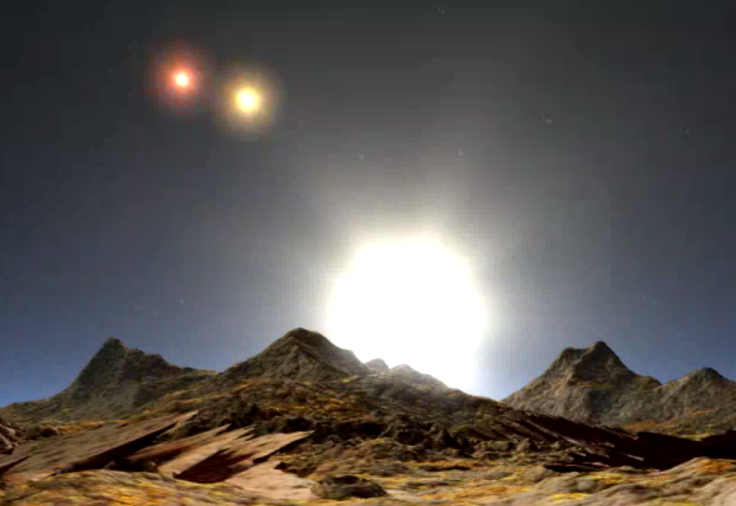Astronomers Discover Planet In Extremely Rare Triple Star System

In the cosmic scale of things, circumbinary planets, which orbit two stars — à la Luke Skywalker’s home world Tatooine — are a dime a dozen. What is much rarer is a planet that orbits three stars, and that is why the discovery of the gas giant KELT-4Ab assumes special importance.
KELT-4Ab, which is about as massive as Jupiter, is located in a very peculiar star system nearly 700 light-years away. The planet orbits its parent star KELT-A every three days, while the other two stars — KELT-B and C — form a binary system which is much farther away, and complete an orbit around one another approximately 30 years. This binary system makes one orbit around KELT-A every 4,000 years.
“The binary system KELT-4BC may be what ultimately drove the planet KELT-4Ab so close to its star,” Jason Eastman, a research associate at the Harvard-Smithsonian Center for Astrophysics and lead author of a study published in the Astronomical Journal, told Space.com.
The overheated planet, which belongs to a category known as “hot Jupiter,” is only the fourth known one to be part of a three-star system. KELT-4Ab is located scorchingly close to its parent star and if you were transported to the surface of the planet — and were equipped to see through its thick, inflated atmosphere — you would see an extremely bright KELT-A occupying 40 times the space our Sun is seen occupying from Earth. The other two stars would each appear no brighter than a full moon.
Although it’s a safe bet that life as we know it doesn’t stand a chance of existing in such harsh circumstances, scientists are still studying this rare system to understand something else — how do hot Jupiters form?
Scientists believe that gas giants in distant orbits become hot Jupiters when the gravitational influences from nearby objects drive them into closer orbits. These planets start out in eccentric orbits before settling into tight, circular orbits over a period of hundreds of millions of years.
“Exactly how they got so close is an outstanding question, but one theory is that it migrates due to hot interactions with a third body — in this case, the third and fourth bodies KELT-BC,” Eastman told Space.com.
© Copyright IBTimes 2024. All rights reserved.






















